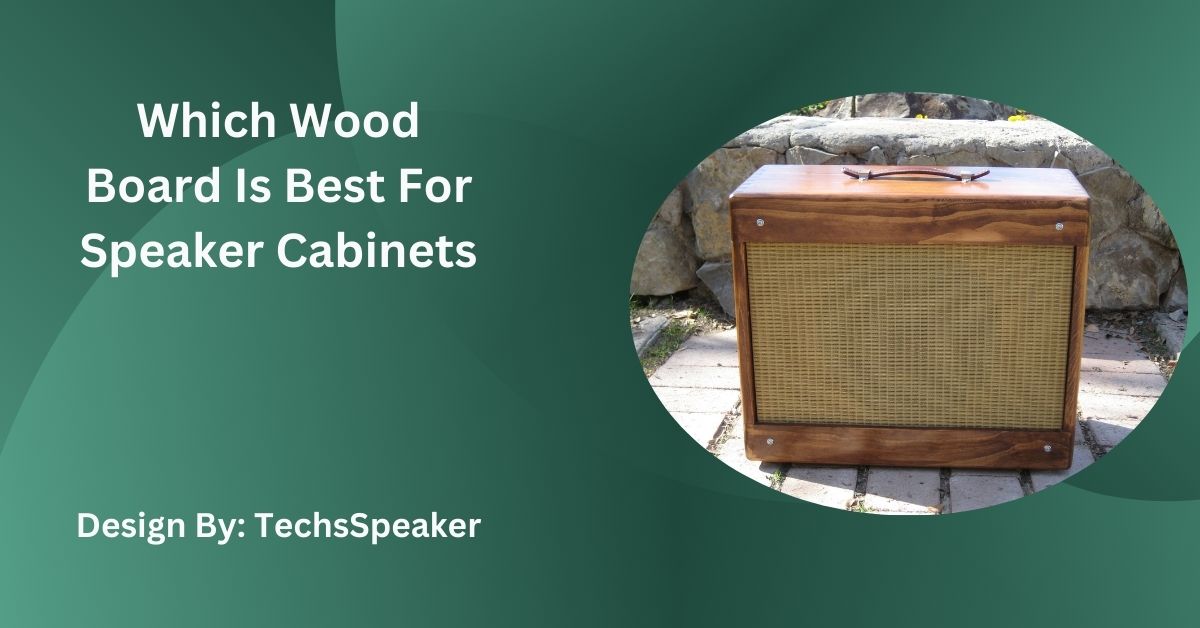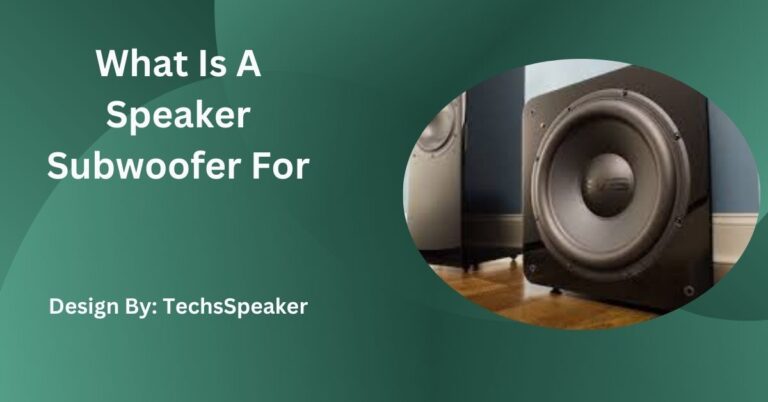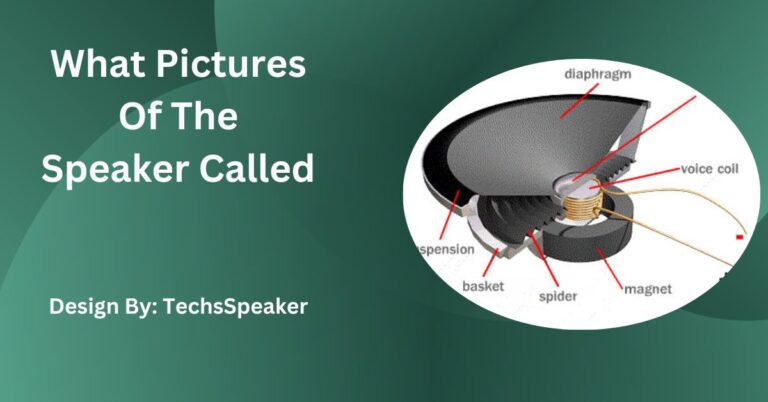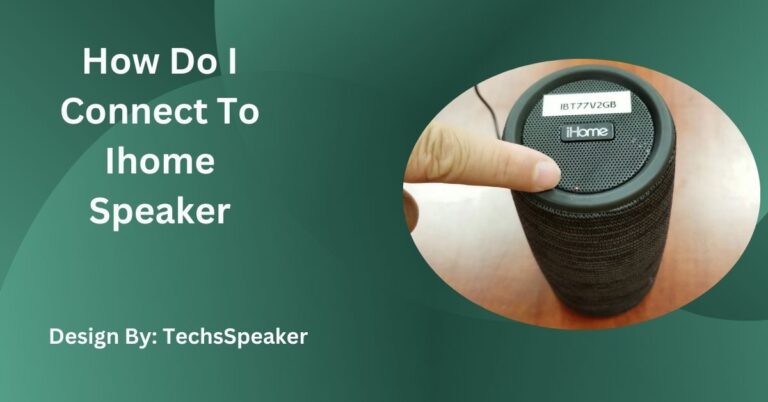Which Wood Board Is Best For Speaker Cabinets – Complete Guide!
The choice of wood for speaker cabinets significantly influences sound quality, durability, and aesthetics. Understanding different wood types helps in making an informed decision for optimal audio performance and longevity.
When it comes to crafting speaker cabinets, the choice of material is more than just an aesthetic decision. The wood you select plays a pivotal role in shaping the sound quality, durability, and overall performance of your speakers.
Whether you’re an audio enthusiast aiming for the perfect home setup or a professional seeking to maximize audio fidelity, understanding how different types of wood affect sound can guide you to the best decision for your needs.
Why Wood Matters in Speaker Cabinets?
Before we jump into the best wood options, it’s essential to understand why wood selection matters. Speaker cabinets are more than housings; they are integral parts of the speaker system that influence sound resonance, clarity, and projection.
Sound Resonance
Wood’s natural properties make it an excellent material for sound resonance. It can naturally amplify sound waves without producing too much vibration or distortion. This quality helps in achieving a full, rich audio experience.
Durability
While plastic and metal are alternatives, wood offers a balance of strength and subtlety. Properly constructed wooden cabinets stand the test of time, resisting warping and maintaining sound quality over the years.
Aesthetic Appeal
For many, the visual aspect of wooden cabinets is a significant draw. Different woods offer various grains, colors, and finishes, allowing you to match your setup to your decor or personal style.
Top Wood Options for Speaker Cabinets:
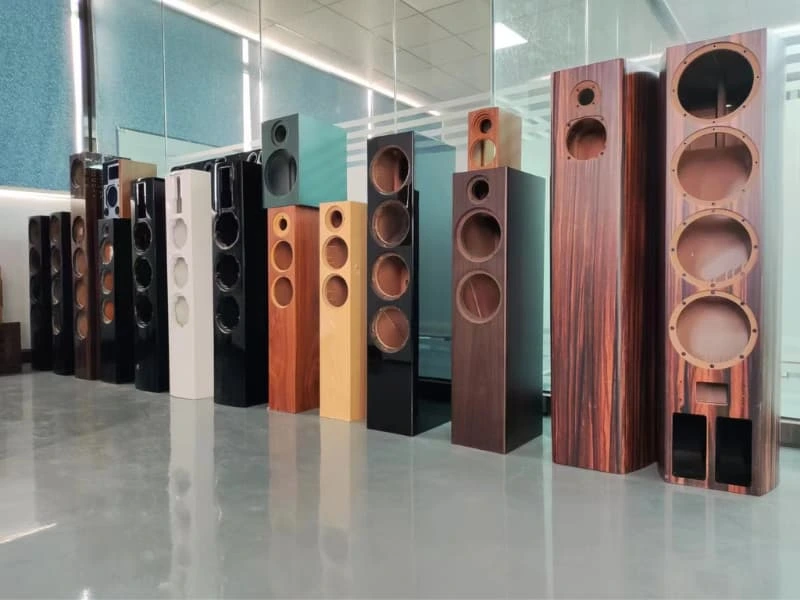
Let’s explore some of the most popular woods used in speaker cabinet construction, examining how each impacts sound quality and the pros and cons.
MDF (Medium-Density Fiberboard)
MDF is a composite wood product made from wood fibers bonded with resin under heat and pressure. It is widely used in speaker cabinets due to its acoustic properties.
Pros:
- Consistent Density: MDF’s uniform density ensures consistent sound quality across the surface of the cabinet.
- Cost-Effective: Typically cheaper than solid wood options, making it accessible for many projects.
- Easy to Work With: Its smooth surface is ideal for veneering or painting.
Cons:
- Heavy: MDF is denser and heavier than many wood types, which can be a drawback if portability is a concern.
- Sustainability: Being a manufactured product, its environmental impact can be higher than natural wood.
Plywood
Plywood is another engineered wood, made by gluing several thin layers of wood veneer together. It offers a good balance between strength, weight, and cost.
Pros:
- Strength Overweight: Plywood provides a high strength-to-weight ratio, making it durable yet relatively lightweight.
- Cost-Effective: It’s often less expensive than hardwoods but offers better durability than MDF.
- Versatile: Available in different grades and finishes to suit various needs.
Cons:
- Inconsistent Quality: Lower-quality plywood may have voids or defects that affect sound quality and aesthetic appeal.
- It May Require Additional Finishing: To achieve a polished look, plywood often needs additional veneers or finishes.
Birch
Birch plywood is a common choice in high-end speakers due to its superior tonal qualities.
Pros:
- Excellent Resonance: Birch plywood offers superior sound clarity and warmth.
- Durable: Known for its strength and resistance to wear and tear.
- Beautiful Finish: Aesthetically pleasing with a natural, fine grain.
Cons:
- More Expensive: It is often pricier than MDF or regular plywood.
- Heavier: Although not as heavy as MDF, birch can still add considerable weight to the cabinet.
Particleboard
Particleboard is made from wood chips and resin, similar to MDF but typically less dense.
Pros:
- Affordable: One of the most cost-effective options available.
- Decent Sound Quality: Adequate for entry-level speaker cabinets.
Cons:
- Less Durable: Not as strong or durable as other options.
- Prone to Damage: Can swell or deteriorate when exposed to moisture.
Solid Wood
While not as common due to cost and manufacturing challenges, solid wood offers unparalleled acoustic qualities.
Pros:
- Natural Acoustic Properties: Offers warm, rich tones and natural resonance.
- Durability: High-quality solid wood can last for decades.
- Aesthetic Appeal: Each piece of solid wood has a unique grain pattern, enhancing visual appeal.
Cons:
- Expensive: Often the most costly option.
- Requires Skill to Work With: More challenging to construct and maintain compared to engineered woods.
Also Read: What Is The SPL Of Dynaudio Heritrage Bookshelf Speaker – Detailed Guide!
Making the Right Choice:
Choosing the ideal wood for your speaker cabinets depends on balancing sound quality, budget, and design preferences. Here are some tips to help guide your decision:
Assess Your Needs
Consider how the speakers will be used. For home use where aesthetic and sound quality are paramount, birch plywood or even solid wood might be worth the investment. For entry-level or portable speakers, MDF or particleboard may suffice.
Consider Environment
Think about the humidity and temperature of the environment where the speakers will be used. In damp conditions, plywood may resist moisture better than particleboard.
Budget Constraints
While it’s tempting to go for the best materials, ensure your choice aligns with your budget. MDF and regular plywood offer great sound quality without breaking the bank.
Seek Expert Advice
If you’re unsure about the best choice for your specific needs, consult with audio professionals or woodworkers. They can offer insights based on experience and help you avoid common pitfalls.
FAQs:
1. Why is wood preferred over plastic or metal for speaker cabinets?
Wood is preferred because it enhances sound resonance, offers durability, and provides aesthetic appeal, making it an excellent choice for high-quality, long-lasting speaker cabinets.
2. What are the advantages of using MDF for speaker cabinets?
MDF offers consistent density, cost-effectiveness, and ease of working with, making it a popular choice for achieving reliable sound quality and smooth finishes in speaker cabinets.
3. How does birch plywood impact sound quality in speaker cabinets?
Birch plywood enhances sound clarity and warmth, providing superior tonal qualities. It is durable and aesthetically pleasing, making it ideal for high-end speaker cabinets.
4. What should be considered when choosing wood for speaker cabinets in a humid environment?
In humid conditions, plywood is preferable as it resists moisture better than particleboard, ensuring the speaker cabinets maintain their integrity and sound quality over time.
5. Why might solid wood be less common for speaker cabinets despite its acoustic benefits?
Solid wood is less common due to its higher cost and manufacturing challenges, although it offers unparalleled acoustic qualities, durability, and unique aesthetic appeal.
Conclusion:
Choosing the right wood for speaker cabinets is crucial for achieving the desired sound quality, durability, and aesthetic appeal. Different woods like MDF, plywood, birch, and solid wood each offer unique benefits and challenges. By understanding the properties and implications of each wood type, you can make an informed decision that balances sound performance, budget, and design preferences. Consulting with experts can further enhance your choices, ensuring optimal results for your speaker cabinets.

